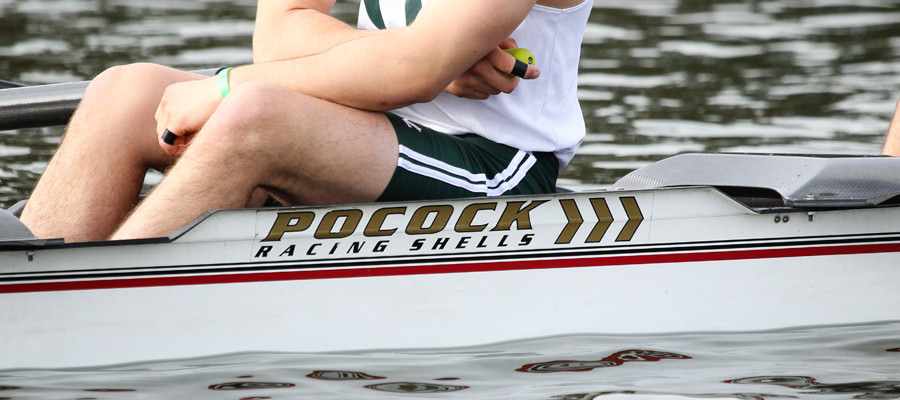Part 3: Racing Shell Performance and Boat Feel
When you’re buying a new or used racing shell, there’s a lot of technical jargon thrown around that probably isn’t part of your every day vocabulary. We have a three-part series that takes a stab at defining the terms that you may hear or read from a boat manufacturer, and how they affect your rowing shell’s performance and longevity. Did we miss one? Let us know.
Performance and Boat Feel
Wetted Surface: The surface area of the hull that is underwater.
Drag: The forces that act on the hull to slow down its speed.
Skin Drag: The force that slows down a hull due to the friction between the skin of the boat and the water.
Wave Drag: (Also called “parasitic drag”) The drag that is a result of simply pushing the shape through the water. The faster the boat goes, the higher the drag.
Hull Shape: (As in: aggressive hull shape) Boat designers work to create a hull shape that is stable, yet fast.
Pitching Hull: The longitudinal up and down rocking motion of a boat.
Roll: The side-to-side motion of a boat.
Stability: How much a boat pitches and rolls while being rowed.
Wet Sanded Hull: Some builders rough-sand below the waterline to reduce drag. The theory is that the “scratches” hold water, and water-on-water is slipperier, hence faster. The majority of builders do the exact opposite and obsessively shine the hulls of the boats.
Stiffness: The rigidity of the hull, or the extent to which it resists bending. It’s the opposite of flexible. A stiff boat will allow more of the rower’s effort to contribute to the boat going faster, since less of the rower’s force will be absorbed by the flexing of the boat.
Torsional Stiffness: Refers to the boat’s resistance to twisting. When force is applied on both the starboard and port sides, the boat can twist. Wing riggers significantly improve torsional stiffness.
The Bottom Line
Know whom you’re shopping for. The most expensive boat isn’t always the best fit. It’s easy to slow down a crew by over or under boating them. Because rowing technique plays such a large part of boat speed, a less experienced crew will most likely go faster in a more stable, training-type boat, as opposed to an aggressive, elite-level racing machine.
It’s also important to anticipate your lifetime use of the boat. Will you be reselling it in 2 years? Letting the varsity row it for a year then passing it onto the novice? Will it be your top racing shell (or learn to row shell) for 5+ years? Again, knowing who and how you’re planning on using the boat, and then shopping for an appropriate model will help ensure that you’ll get the best value.




No Comments
No comments yet.
Sorry, the comment form is closed at this time.